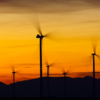Minghao Zhuang, Xi Lu, Wei Peng, Yanfen Wang, Jianxiao Wang, Chris P. Nielsen, and Michael B. McElroy. 2021. “Opportunities for household energy on the Qinghai-Tibet Plateau in line with United Nations’ Sustainable Development Goals.” Renewable and Sustainable Energy Reviews, 144, July 2021, Pp. 110982. Publisher's VersionAbstract
Approximately seven million population in the Qinghai-Tibet Plateau of China, a global climate sensitive region, still rely primarily on yak dung for household cooking and heating. The treatment and combustion of yak dung result in a variety of negative impacts in terms of local alpine grassland degradation, indoor air pollution, public health risk, as well as global climate change. There is an urgent need to explore alternative pathway for affordable and clean energy as indicated in the United Nations’ Sustainable Development Goals for 2030. This perspective has analyzed the key challenges rooted in yak dung use on the Qinghai-Tibet Plateau region. Based on this, this perspective has further proposed a new complementary energy system to take advantage of locally available, clean and sustainable energy sources of wind and solar power, and have provided economic analyses. Meanwhile, this perspective has pointed out the potential barriers to promoting the new complementary energy system in the Qinghai-Tibet Plateau region due to traditional habits, economic factors and policies. Finally, strategies for transitioning from yak dung to the proposed alternative energy system is discussed at the end. Successful energy transition for the Qinghai-Tibet Plateau region offers an important option to achieving many other sustainable development goals related to climate change, economic development, and environment. The perspective is expected to shed light on the development of sustainable energy in other developing region or countries in the world to address multiple societal goals.





